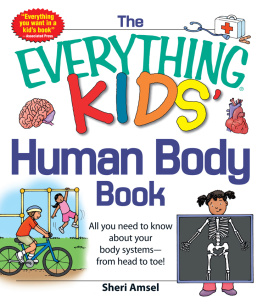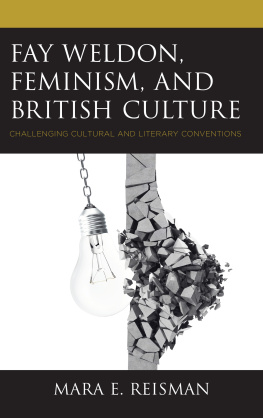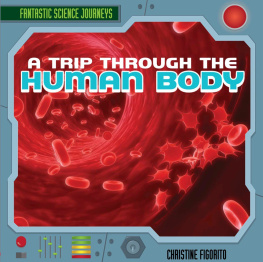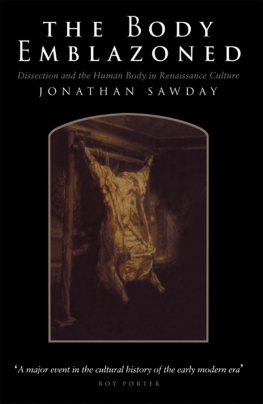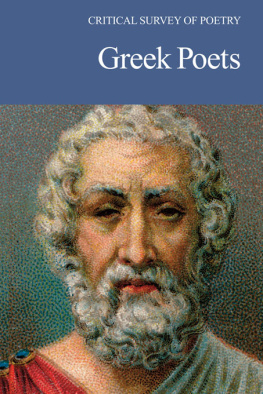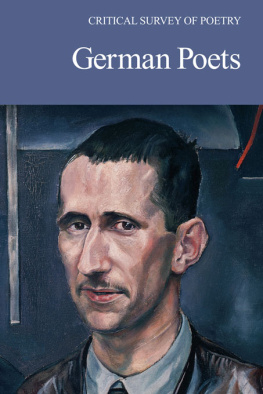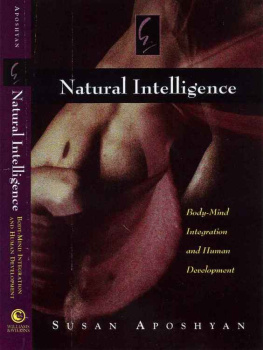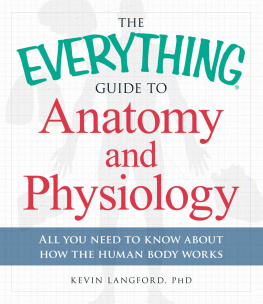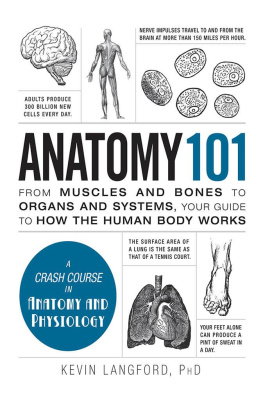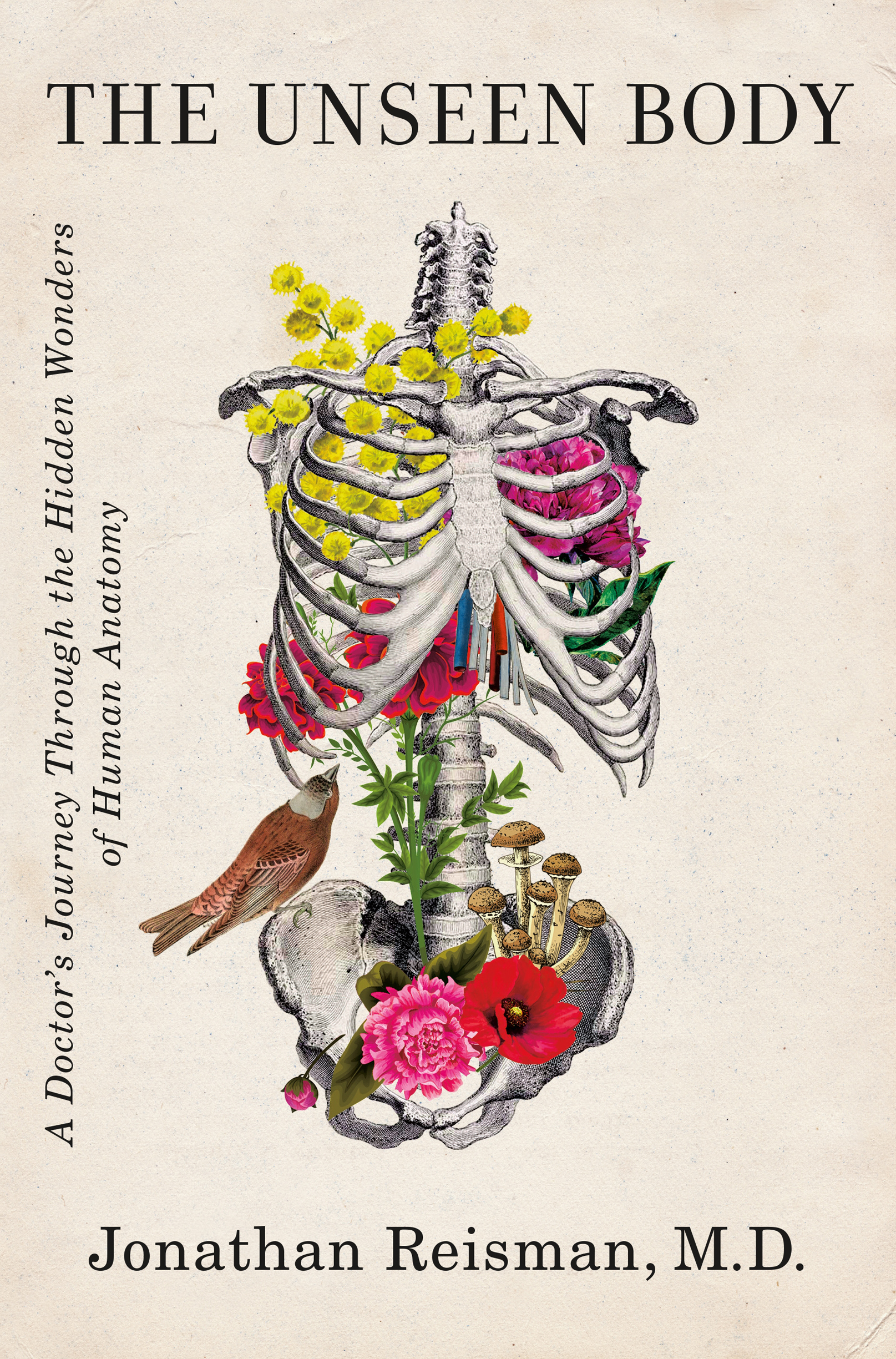Contents
Guide
Pagebreaks of the print version

The author and publisher have provided this ebook to you for your personal use only. You may not make this ebook publicly available in any way. Copyright infringement is against the law. If you believe the copy of this ebook you are reading infringes on the authors copyright, please notify the publisher at:
us.macmillanusa.com/piracy.
To Kai and Sierra,
may they wander, explore, and be
fascinated by everything
I got my first glimpse under the human bodys hood on the very first day of medical school in anatomy lab, the class in which I would dissect a cadaver. My classmates and I dug only as deep as the muscles of the cadavers back that day, but we uncovered a captivating view into the mechanics of how we move our arms and flex our spine. That glimpse inside the body felt like a behind-the-scenes look at life itself, and before that first lesson ended, I had decided that when I died, I would donate my own body for the very same medical school dissection.
Over the following months, we dug deeper into the cadaver and examined each of the internal organs one by onethe bodys hidden workhorses that labor every day of our lives to keep us healthy. Liver, stomach, intestines, lungs, heart, kidneyseach was a unique inhabitant of a new world I was discovering, and each had its own specific role in keeping us ticking. I saw that all the human body is a stage, and the internal organs are its primary players.
Taken as a whole, the human bodys shape is complicateda bulbous head, four barely cylindrical limbs, and jutting corners of bone disturbing any hint of simple geometry. But the body really has only two sides: an outside and an inside. Our outside lives begin on the skins surface and include the everyday world of appearances and conversation, of air, nature, and other people. Most people spend their entire lives focused exclusively on the outside world, but medical training necessarily centers on the bodys inside lifethe one that most people ignore until some symptom draws their at- tention and conjures up fear of a dreaded, mysterious process happening within. Though our insides glimpse the light only in operating rooms or after terrible traumas, they are the human bodys true biological business end.
For each body part, I memorized details of its structure and function, handled rubbery, preserved specimens, and studied microscopic views of its cellular architecture. I came to understand each organs function in sickness and in health, and then regurgitated its detailed story for an exhausting multiple-choice examination before moving on to the next one. Medical school meant speed-dating internal organs, and I found myself falling in love with all of them.
I never wanted to become a doctor. Before I became an explorer of the human body, my passion was exploring the natural world. Strangely, my interest in nature was sparked while at college studying mathematics in the middle of ManhattanI think that the oppressively urban surroundings along with the abstract unnatural perfection of math pushed me to sign up for a guided walk of wild edible plants in Central Park. On a warm summer day, we walked through the parks forests and fields, with tall buildings towering in the distancewe found a weed called poor mans pepper, which had a sharp, biting taste, and picked a handful of delicious wild raspberries. The idea of obtaining sustenance for the human body directly from nature intrigued me, and learning to identify a few species of plant opened my eyes to a whole new world.
After that first glimpse, I started learning to identify every species of plant, animal, and fungus that I might encounter in the woods, especially the edible ones. I became fascinated by the idea of living off the land, obtaining from it not only food but also materials for essential subsistence crafts. I read books about how willow branches can be woven into baskets, and how animal skins become clothing, and my dorm room soon became littered with wood shavings and half-finished projects. I longed to travel the world and visit different cultures to learn how each interacted with its own unique natural environment.
Once I graduated from college, I got my chance and developed an incurable wanderlust that began while living in Russia. By experiencing different cultures and understanding their worldviews, I broadened my own understanding of the natural world and the species inhabiting it. I spent several years adrift, sustaining my nomadic lifestyle with odd jobs at a summer camp and research grants to study native peoples of the Russian Far East. I was unsure of what I wanted to do with my lifeI thought about becoming a craftsman, getting a degree in ecology, or taking up residence in the wilderness.
Ultimately, I decided that becoming a doctor was the best way to combine three of my passionsanalytical problem-solving, working with my hands, and continuing to explore the world, but with the ability to offer medical help to the people I would encounter in the earths far-flung regions. Once I started medical school and my scalpel met the cadavers skin, I discovered that exploring the body felt quite similar to exploring the outside worldlearning about internal organs reminded me of learning about species in nature. Each organ was a different creature with its own unique appearance and particular behaviors, and each could be found tucked into its own corner of the bodys insides, its particular native habitat.
Once I started at Robert Wood Johnson Medical School in New Jersey, I was surprised to find that the same skills I use in observing nature had prepared me well for being a doctor. One day while exploring a small, neglected patch of woods behind the medical schools parking lot, I came upon a cluster of wild mushrooms. I had pushed through a tangle of poison ivy and other weeds ringing the lot, drawn by a curiosity about what lay beyond.
At first, I thought the mushrooms were just a piece of garbage driven by the wind into that spot. But as I walked closer, I realized that what I was looking at was alivea creamy, light-orange collection of fungi, each one poised slightly over the moist, shaded soil. My mushroom identification skills were still rudimentary, and I wondered if they were medicinal, hallucinogenic, or one of the poisonous species Id heard mentioned in toxicology class, a few bites of which can cause fulminant liver failure. Or perhaps they were edible. The day after I found those mushrooms, I bought a field guide so I could identify them, and I began diving into the world of edible fungi alongside my medical school curriculum.
I began filling my head with information. Most days, after exploring the human body in anatomy lab, I traded in my scalpel for a basket and delved farther into the woods behind the parking lot or roved across other promising patches of land, my sight and attention drawn to every wood-chip pile and overwatered suburban lawn in search of mushrooms. I came to covet the dazzling intuition and encyclopedic knowledge of seasoned mushroom foragers in the same way that I admired senior doctorsboth showed a nonchalant certainty as they made life-and-death decisions about which mushrooms were edible and which were poisonous, or which patients needed urgent treatment and which were healthy enough to be discharged home. I wondered if I could ever make such decisions with comfortif confidence would ever eclipse my anxiety.


